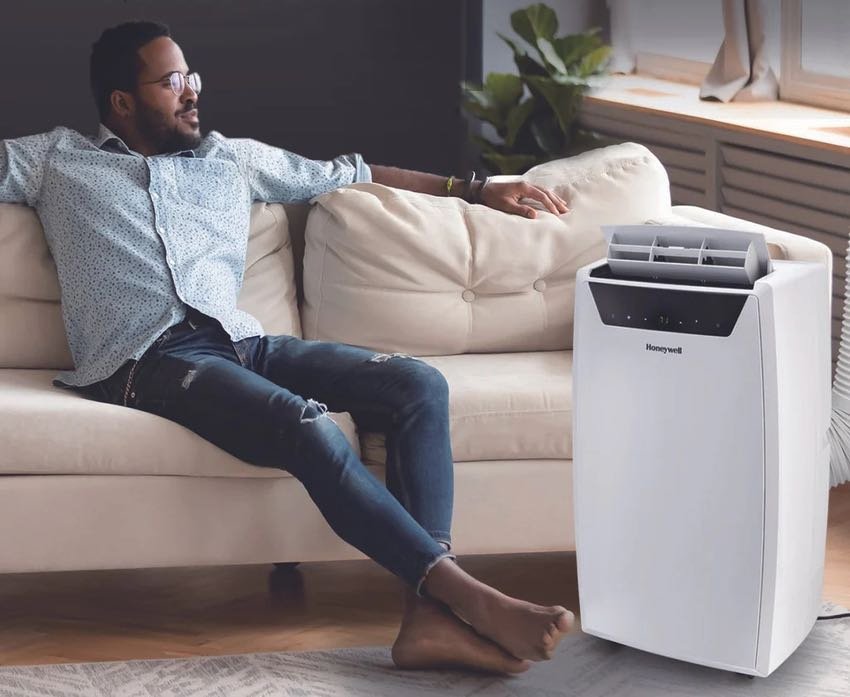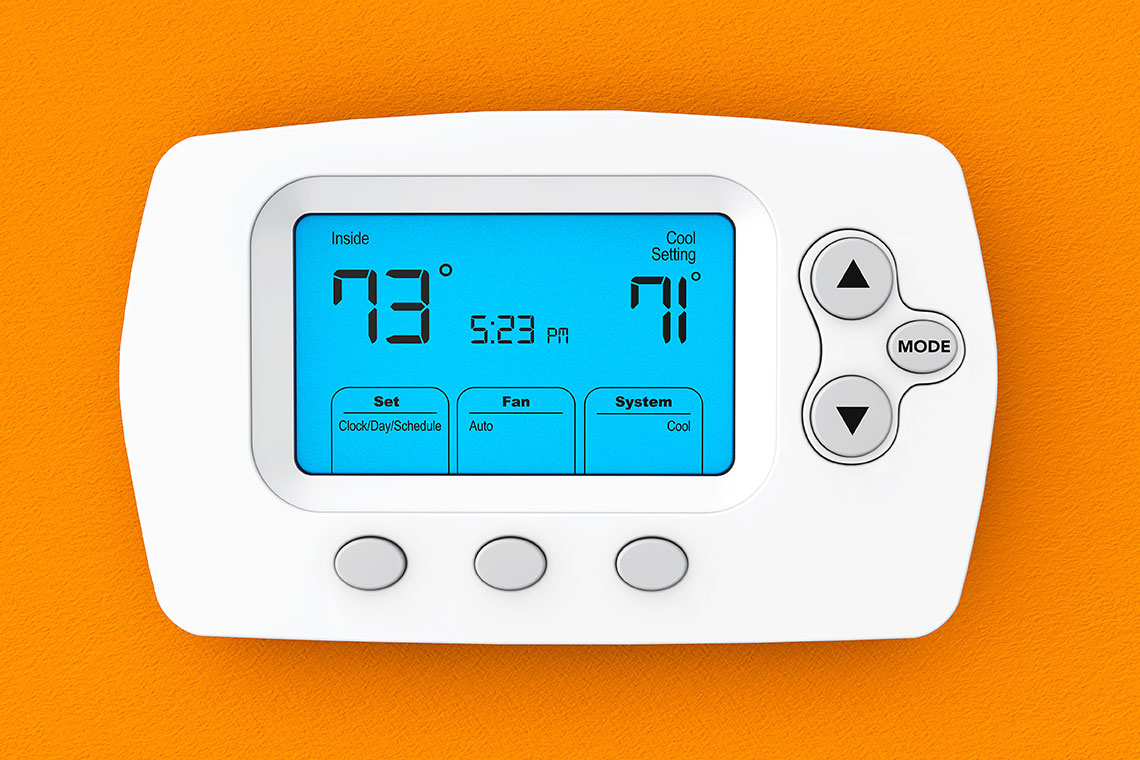Best Temp For Air Conditioning In Summer

Finding Your Perfect Summer Comfort Zone: Optimizing Air Conditioning Temperatures
As summer heat intensifies, the question of the ideal air conditioning temperature arises for homeowners, facility managers, and HVAC technicians alike. While personal comfort is paramount, energy efficiency and system longevity also play significant roles in determining the optimal setting. This article explores the various factors influencing the best temperature for air conditioning during the summer months, balancing comfort with cost and system health.
The Science of Comfort: More Than Just Temperature
Human comfort is not solely dictated by temperature. Relative humidity, air movement, and personal factors all contribute to how we perceive temperature. High humidity hinders the evaporation of sweat, making us feel hotter. A ceiling fan, for instance, can create a cooling effect by increasing air circulation, even without lowering the thermostat. Understanding these variables allows for a more nuanced approach to setting your air conditioning.
The Popular Choice: 78°F (26°C) and Why It Works
The U.S. Department of Energy recommends setting your thermostat to 78°F (26°C) when you're home during the summer. This temperature strikes a balance between comfort and energy savings. Here's why:
- Energy Efficiency: For every degree you raise your thermostat, you can save approximately 1-3% on your cooling costs. A setting of 78°F significantly reduces the workload on your air conditioning system, leading to lower energy consumption.
- Dehumidification: While higher temperatures might seem counterintuitive, running your AC at 78°F still allows it to effectively dehumidify your home. Removing excess moisture is crucial for comfort, even at slightly warmer temperatures.
- System Longevity: Overworking your air conditioner by setting it to extremely low temperatures can shorten its lifespan and lead to costly repairs. Maintaining a reasonable temperature reduces strain on the compressor and other vital components.
Beyond 78°F: Adjusting for Individual Needs
While 78°F is a good starting point, it's not a one-size-fits-all solution. Several factors can influence your ideal temperature:
- Age and Health: Infants, the elderly, and individuals with certain medical conditions may require cooler temperatures to maintain their health and well-being.
- Activity Level: If you're engaged in strenuous physical activity indoors, you might prefer a lower temperature.
- Home Design and Insulation: Homes with poor insulation or large windows tend to be warmer and may require lower thermostat settings to achieve the same level of comfort.
- Personal Preference: Ultimately, personal preference plays a significant role. Experiment with different settings to find the temperature that provides optimal comfort for you and your family.
Smart Thermostats: A Game Changer for Energy Efficiency
Smart thermostats offer advanced features that can significantly improve energy efficiency and comfort control. These devices learn your schedule and automatically adjust the temperature based on your preferences. Key benefits of smart thermostats include:
- Programmable Schedules: Set different temperatures for different times of day, ensuring optimal comfort when you're home and energy savings when you're away.
- Remote Access: Control your thermostat from your smartphone or tablet, allowing you to adjust the temperature even when you're not at home.
- Geofencing: Smart thermostats can use your phone's location to automatically adjust the temperature when you leave or return home.
- Energy Reports: Track your energy consumption and identify areas where you can save money.
The Impact of Humidity on Air Conditioning Settings
As mentioned before, humidity significantly impacts perceived comfort. A dehumidifier can be a valuable addition, especially in humid climates. By reducing the humidity level, you can set your thermostat a few degrees higher without sacrificing comfort. This translates to energy savings and reduced wear and tear on your air conditioner.
Consider these points regarding humidity:
- Target Humidity Level: Aim for a relative humidity level between 30-50%.
- Whole-House vs. Portable Dehumidifiers: Whole-house dehumidifiers are integrated into your HVAC system, while portable units are designed for smaller areas.
- Maintenance: Regularly clean or replace the filter in your dehumidifier to ensure optimal performance.
Air Conditioning Best Practices: Beyond Temperature Settings
Optimizing your air conditioning system involves more than just setting the right temperature. Follow these best practices to maximize efficiency and extend the life of your unit:
- Regular Maintenance: Schedule annual maintenance with a qualified HVAC technician. This includes cleaning the coils, checking refrigerant levels, and inspecting the electrical components.
- Air Filter Replacement: Replace your air filter every 1-3 months, depending on the type of filter and the air quality in your home. A dirty air filter restricts airflow, reducing efficiency and potentially damaging your system.
- Seal Air Leaks: Seal any air leaks around windows, doors, and ductwork. This prevents conditioned air from escaping and unconditioned air from entering your home.
- Insulation: Ensure your home is properly insulated to minimize heat transfer.
- Proper Ventilation: While sealing air leaks is important, proper ventilation is also necessary for healthy indoor air quality. Consider using exhaust fans in bathrooms and kitchens to remove moisture and odors.
Air Conditioning For Commercial Buildings
For property managers overseeing commercial buildings, optimizing air conditioning is a critical factor in tenant satisfaction and operational costs. Strategies for maintaining optimal temperatures in these settings often differ from residential approaches due to variable occupancy levels and diverse usage patterns. Considerations include:
- Zone Control: Implementing zone control allows for independent temperature settings in different areas of the building based on occupancy and usage. This minimizes unnecessary cooling in unoccupied spaces.
- Building Automation Systems (BAS): A BAS provides centralized control and monitoring of HVAC systems, enabling precise temperature adjustments and energy management.
- Demand Response Programs: Participate in demand response programs offered by utility companies. These programs provide incentives for reducing energy consumption during peak demand periods.
- Regular Audits: Conduct regular energy audits to identify opportunities for improvement.
The Cost of Cooling: Understanding Energy Bills
Understanding your energy bill is essential for making informed decisions about your air conditioning usage. Pay attention to the following:
- Kilowatt-hours (kWh): This is the unit of energy used to measure your electricity consumption.
- Seasonal Rate Changes: Many utility companies charge higher rates during peak summer months.
- Energy Star Ratings: When purchasing new air conditioning equipment, look for Energy Star-certified models. These units meet stringent energy efficiency standards.
To estimate the cost of running your air conditioner, use the following formula:
(Air Conditioner Wattage / 1000) x Hours of Use x Electricity Rate per kWh = Cost
For example, a 1500-watt air conditioner running for 8 hours at a rate of $0.15 per kWh would cost $1.80.
HVAC System Lifespan and Replacement Considerations
The typical lifespan of an air conditioning system is 10-15 years. As your system ages, its efficiency may decline, and repairs may become more frequent. When considering a replacement, evaluate the following:
- SEER Rating: The Seasonal Energy Efficiency Ratio (SEER) measures the cooling efficiency of an air conditioner. Higher SEER ratings indicate greater energy savings.
- HSPF Rating: The Heating Seasonal Performance Factor (HSPF) measures the heating efficiency of a heat pump.
- System Size: Ensure your new system is properly sized for your home. An undersized system will struggle to cool effectively, while an oversized system will cycle on and off frequently, leading to reduced efficiency and comfort. Consult with an HVAC professional to determine the appropriate size for your needs.
- Refrigerant Type: Consider systems that use environmentally friendly refrigerants, such as R-410A (although phasing out in favor of R-32 in some regions) or newer alternatives with lower Global Warming Potential (GWP).
Conclusion: Finding the Sweet Spot
Determining the best temperature for air conditioning in the summer is a balancing act between personal comfort, energy efficiency, and system longevity. While 78°F is a recommended starting point, it's essential to consider individual needs and factors like humidity, insulation, and activity level. By implementing best practices, utilizing smart thermostats, and understanding your energy bill, you can optimize your air conditioning system for maximum comfort and savings. Regular professional maintenance is critical to keep your system running efficiently for years to come.










